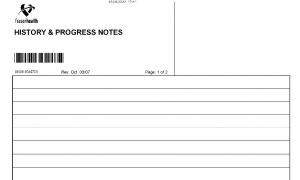For this assignment, I wanted to take a deeper dive into the mechanization of writing with an application of the material to the context of my work. In order to do this, I opted to omit the content from the handwritten task to prevent this post from being lengthy. Instead, I will share my insights from the task.
For the medium, I chose to use a pen and paper. If a mistake is made during manual writing, I have to cross out the word and then rewrite it, or attempt to change the appearance of a misplaced letter. Using a pen prevents me from removing this error from my work. In lieu of this, to prevent an excerpt from having many errors, it should be well thought out and planned. Multiple errors will make the text difficult to follow thus challenging to read. It also poses challenges to eloquently portraying thoughts and ideas, as writing is typically a process that requires many revisions until you get it just right. Had I used a pencil instead of a pen, I could have erased errors ensuring an aesthetically pleasing final product. The other noticeable divergence from using a computer to manually creating text was the inability to use spell check. This latter issue would add to Plato’s argument that writing, in the context of the evolution of text technologies, can foster forgetfulness (Haas, 2013).
Haas (2013) and Bolter (2001) bring forth meaningful debate regarding the mechanization of writing which fostered a deep reflection surrounding the work I am currently involved with. As new technologies emerge, healthcare systems shift to adopt newer, more mechanized forms of writing in the hopes to remediate manual forms of writing for the purposes of saving money and providing safer patient care (Bolter, 2001). The work I am doing is involved with the development of electronic medical and health records so that hospitals can move away from being paper based. Specifically, I am involved with developing and designing documentation templates that will be used by providers at acute care sites. This requires meeting with providers who have been appointed as subject matter experts (SMEs) for their departments to assess their documentation needs. Their feedback is then used to edit standard content provided by the vendor to suite the needs of these specialty areas.
Moving to a fully electronic system for documentation is going to cause significant shifts in the workflow for and the culture of providers at acute care sites. Currently, providers either document using a pen (that they likely stole from a nurse) and paper or via a dictation service they call into which generates a recording that is later transcribed by a human. If using the paper and pen method, they first need to locate the physical patient chart, tab to the section for doctor’s notes, and using a lined, 3-hole punched, piece of paper with patient specific identifiers in the heading, chart their assessment, findings and plan. Here is an example of their pen and paper documentation:

In future states, paper based documentation and transcription services will no longer be offered. Instead, they will be required to electronically chart, using a computer. That process requires them to locate a computer, log into their account, enter into the EMR system, select the patient’s electronic chart, then launch the documentation routine with the most appropriate document. Here is an example of what the electronic version of their charting will look like:


As you can hopefully see, electronic documentation separates out each section grouping information. Each of these sections then expands to reveal subsections with documentation fields.
All of these forms of text have a material essence to them both physically and psychologically (Haas, 2013). The process of providers documenting with either a pen and paper, or electronically, results in the production of material artifacts (health/medical records) which occupy space (Haas, 2013). Paper documentation is a space occupying material in the obvious sense that a piece of paper is physical, you can touch it, and add it to a patient’s chart. As more paper is added, the bigger the patient’s chart becomes. Electronic versions of documentation equally take up space via the computers they are created on and the servers information is stored on. From a psychological perspective, provider documentation has the ability to influence others. For example, medical records are utilized by other practitioners for the planning of patient care, for making in the moment healthcare decisions, and as an educational aide for students learning in the clinical setting.
The semiotic and material domain of provider documentation has the power to transform the future of health care (Haas, 2013). One of the ways this is accomplished is through the generation of health records (via provider documentation) producing vast amounts of healthcare related data. In fact, the generation of ‘Big Data’ from health records has given rise to the discipline of Health Informatics. The digitization of healthcare will have major implications both intellectually and economically. Large data sets extracted from health records can be used to train AI to perform computational tasks such as predictive modelling (searching for the next threat to public health) or to quickly and more accurately diagnose patients. This push to digitize and remediate the healthcare system shows the cultural importance these tools have in North American society. Haas (2013) would argue that this is a prime example of technological determinism.
Additionally, electronic health records are more readily and easily mined for data by computers than are paper charts a human needs to page through. The information that can be extracted from these electronic records can also be utilized for research purposes. Lastly, it provides ease of access to patient health care records so that the care patients receive is individualized and safe, reducing errors and improving patient outcomes. While this is not an exhaustive list of the benefits afforded by the mechanization of physician documentation, it highlights the motivational factors pushing for this change.
References
Bolter, Jay David. (2001). Writing space: Computers, hypertext, and the remediation of print [2nd edition]. Mahwah, NJ: Lawrence Erlbaum.
Haas, C. (2013). “The Technology Question.” In Writing technology: Studies on the materiality of literacy. Routledge. (pp. 3-23).
